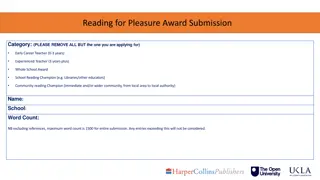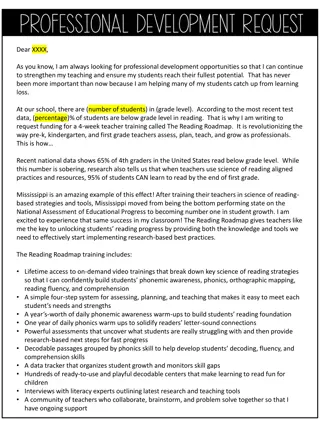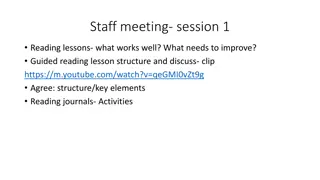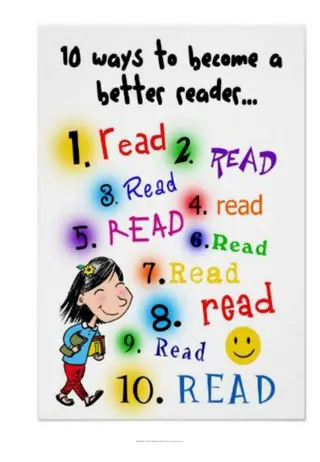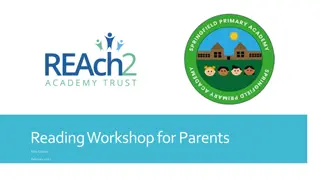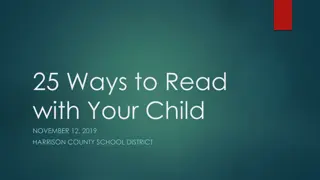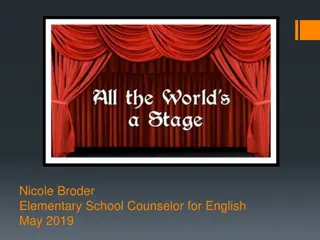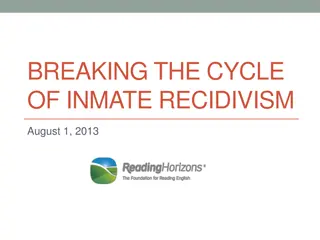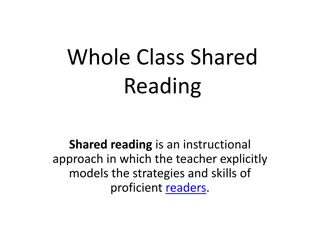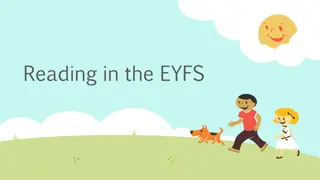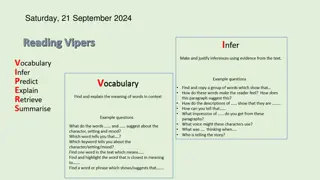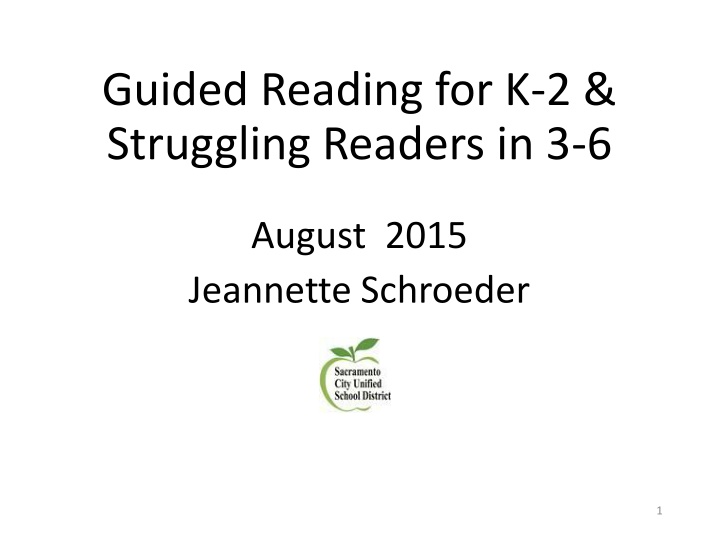
Running Records for Monitoring Early Readers
Dive into the concept of running records as a tool for monitoring the progress of beginning readers. Learn how to administer, score, and analyze assessments using running records, utilize cueing systems to teach guided reading groups, and plan for effective teaching strategies and record-keeping systems. Explore the complexities of reader development and how to support students in developing strategic reading actions tailored to their individual literacy behaviors.
Download Presentation

Please find below an Image/Link to download the presentation.
The content on the website is provided AS IS for your information and personal use only. It may not be sold, licensed, or shared on other websites without obtaining consent from the author. If you encounter any issues during the download, it is possible that the publisher has removed the file from their server.
You are allowed to download the files provided on this website for personal or commercial use, subject to the condition that they are used lawfully. All files are the property of their respective owners.
The content on the website is provided AS IS for your information and personal use only. It may not be sold, licensed, or shared on other websites without obtaining consent from the author.
E N D
Presentation Transcript
Guided Reading for K-2 & Struggling Readers in 3-6 August 2015 Jeannette Schroeder 1
Guided Reading for K-2 & Struggling Readers in 3-6 Session Outcomes: 1. Deepen our understanding of why and how we should monitor the progress of beginning readers using running records 2. How to administer, score, and analyze running record assessments 3. How to use cueing systems to teach guided reading groups 4. Plan for teaching and record keeping systems
Reading is a highly complex process. Readers must build a system of strategic actions for processing texts that begins with early reading behaviors and becomes a network of strategic activities for reading increasingly difficult texts. The construction of systems in the head is unique for each student. Marie Clay (1991) described readers paths to proficient reading as, different paths to common outcomes. Your role is to notice each student s precise literacy behaviors and provide appropriate teaching that supports students in developing their systems of strategic actions.
Why and how should we monitor the progress of beginning readers?
Running Records First Step- Select something that is known to the student for him or her to read orally. (If it is too familiar, the reading may not reveal much information about the child s thinking.) This may be: a guided reading book, a poem, a dictated piece of student writing, some of the student s published personal writing Second Step- Ask the student to read the selected piece aloud. Record the student s reading in one of these ways: Record the correct reading and miscues on a blank sheet of paper as the student reads OR make a copy of the text and mark the miscues on it as the student reads. Third Step- Tabulate the miscues. Use symbols to indicate what the student is doing. Some usual convention follows. (Fountas & Pinnell)
Things to Remember About Running Records Running Records are not timed (if a student is struggling too much with a text, stop the record) Do NOT teach during a running record. (Do NOT correct errors) If a student does not attempt to say the word (allow a few seconds to pass) then prompt them by saying, Try it . Give them the word if they do not try it. (Mark T for told) If a student attempts to sound out a word, but the attempt goes on for 2 or 3 seconds or does not seem productive, then tell them the word and mark T for told along with the sounds that were attempted. No penalty for trying, self correcting, or rereading (but still mark these behaviors)
Administering Running Record
Scoring the Running Record Tally the errors and self corrects Circle the cueing systems the student used in errors and self corrects? Meaning: Using context/picture to make meaning Structure: Making sense of grammar Visual: Using actual print/ word parts on page
Scoring the Running Record What is the error rate of this student? (Total words / Total errors= Error rate) Ex. 100/ 9= 11.1 or 11 rounded to the nearest whole number. The ratio is expressed 1:11 This means that for each error made, the student read approximately 11 words correctly.
Scoring the Running Record What is the accuracy rate of this student? (Total words read- total errors/ total words read X 100= accuracy rate) Ex.100-9/ 100 X 100= 91% Accuracy. You can use the accuracy rate to determine whether the text read is: Independent Easy enough for independent reading 95%-100% Instructional Instructional level for use in guided reading 90%-94% Frustration Too difficult and will frustrate the reader 89%-below
Analyze the Running Record What does the accuracy rate tell us about the students reading level? What cueing system(s) is/are the student using? Around what skill or strategy does this student need instruction?
Guided Reading Groups Teacher pulls students at same reading levels to designated learning area. Teacher begins lesson by having students do some kind of word work (i.e. letter sound review. Teacher does vocabulary work (to help with problems that might occur while students read the text) This is done one student at a time to help stagger the reading of the text selected and avoid choral reading. Students read softly and with teacher occasionally. They become more aware of their own reading process and may learn more than one strategy during one to one with teacher. Purpose- To differentiate instruction based on individual needs, and develop an effective system for students to read increasingly challenging text. Format- Small temporary need based groups (e.g. reading instructional level based on benchmark test, word work, comprehension strategy).
What will Guided Reading look like in my classroom? What do I need to do to make it happen?
Things to Consider: - Environment - Record Keeping System - Student Tools - Plan for Teaching
Why and how should we monitor the progress of beginning readers?
Q & A Evaluations


